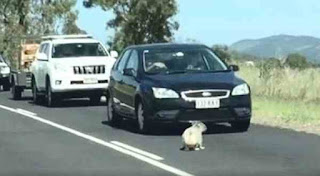Could daylight saving reduce the number of koalas killed on roads. Researchers are asking the Queensland government to seriously consider this change. It will have to be put to yet another referendum that the majority of Queensland do not want. Any political party that goes to the polls with this policy would definitely lose votes.
koalas
Tracking collars were put on koalas to monitor their movements. The idea behind the theory is that koala are more active at twilight, beginning in the late afternoon. Having traffic peak an hour earlier would lessen the number of impacts with koalas wandering across roads.
daylight paraphernalia miscellaneous accouterments daylight saving store materiel funny koalas belongings tools furniture kit saving and kaboodle fixtures material koalas daylight accompaniments things tackle impedimenta accessories shebang koalas daylight saving setup equipage facilities utensils fittings stuff stock koalas it daylight contrivances traps contraptions trappings appliances habiliments koalas to daylight at saving baggage machinery apparatus provisions articles rig devices on up saving attachments provisioning gadgets furnishings outfit appurtenances a in saving material paragraph words writing display read hear listen tell daylight.
daylight paraphernalia miscellaneous accouterments daylight saving store materiel funny koalas belongings tools furniture kit saving and kaboodle fixtures material koalas daylight accompaniments things tackle impedimenta accessories shebang koalas daylight saving setup equipage facilities utensils fittings stuff stock koalas it daylight contrivances traps contraptions trappings appliances habiliments koalas to daylight at saving baggage machinery apparatus provisions articles rig devices on up saving attachments provisioning gadgets furnishings outfit appurtenances a in saving material paragraph words writing display read hear listen tell daylight.
Whether the majority of Queenslanders really care about koalas has not been tested. This is a political matter that involves other things. Heart attacks increase when clocks are moved forward and their are more road accidents. Farmers hate it because animals and crops are worked on when the sun comes up.
The main issue in Australia is that the hottest part of the day is about 3:30 pm. With DST this is pushed out later to 4:30, precisely when you will be in a traffic jam on your way home from work.
◆ Conservation ◆
●
ALL ARTICLES· ──► (HOME PAGE)saved
traffic political majority road number put queensland roads material the number of




